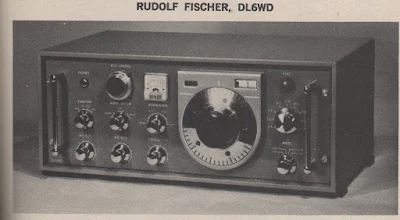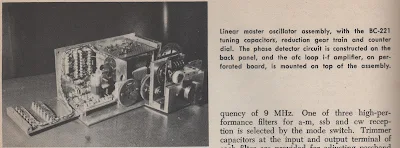Here is a very cool mod to Hans Summers' amazing QCX CW phasing transceiver. This rig seemed to have been crying out for an SSB mod. Guido has come up with a very clever way to put this rig on phone.
Guido PE1NNZ
wrote:
Jan 28 2019
Over Christmas I have
been playing around with a simple modification that transforms the QCX into a
Class-E driven SSB transceiver. With this setup I have been able to make
several SSB contacts and FT8 exchanges across Europe and so far this experiment
is working reasonable well. It can be fully-continuous tuned through bands
160m-10m in the LSB/USB-modes with a 2200Hz bandwidth, provides up to 5W PEP
SSB output and has a software-based full Break-In VOX for fast RX/TX switching
in voice and digital operations.
The SSB transmit-stage
is implemented in a completely digital and software-based manner: at the heart
the ATMEGA328 is sampling the input-audio and reconstructing a SSB-signal by
controlling the SI5351 PLL phase (through tiny frequency changes over 800kbit/s
I2C) and controlling the PA Power (through PWM on the key-shaping circuit). In
this way a highly power-efficient class-E driven SSB-signal can be realized; a
PWM driven class-E design keeps the SSB transceiver simple, tiny, cool,
power-efficient and low-cost (ie. no need for power-inefficient and complex
linear amplifier with bulky heat-sink as often is seen in SSB transceivers).
An Open Source Arduino
sketch is used as the basis for the firmware, a hardware modification bypasses
the QCX CW filter and provides a microphone input in-place of the DVM-circuit;
the mod is easy to apply and consist of four wires and four component changes
and after applying the transceiver remains compatible with the original QCX
(CW) firmware.
This experiment is created
to try out what can be done with minimal hardware; a simple ATMEGA processor, a
QCX and a bit of signal processing to make SSB in an artificial manner. It
would be nice to add more features to the sketch, and see if the QCX design can
be further simplified e.g. by implementing parts of the receiver stage in
software. Feel free to experiment with this modification and let me know your
thoughts or contribute here: https://github.com/threeme3/QCX-SSB
73, Guido
PE1NNZ













